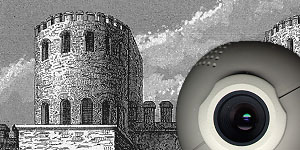


Treasons, Strategems, and Spoils
Governments are always watching, and they get jittery whenever their populations make it hard to know what's going on. For example, in 1977, after creating the first workable public-key system, computer professionals Adi Shamir, Ronald Rivest, and Leonard Adleman, tried to present it at an international conference. But a National Security Agency employee---the agency claims he acted alone---warned them that doing so would be in possible violation of the 1954 Munitions Control Act. Three years later Adleman was denied research funding because the agency feared the ``national security implications'' of his work.Both cases were later settled by Admiral Bobby Inman, then head of the agency, who asked that American civilian secrecy researchers voluntarily submit their papers for vetting before publication. Inman warned that failure to cooperate would force the agency to resort to legal action.
Then, in 1986, Shamir and others devised another breakthrough, workable electronic signatures. When they applied for a United States patent, however, it was denied. Further, at the request of the U.S. Army, the Patent Office issued a secrecy order, informing Shamir that disclosure of the subject matter would be detrimental to national security.
By then though it was already too late. During the summer of 1986 Shamir and his co-authors, typical academics, had blabbed about their amazing piece of research at several universities and conferences in America, Europe, and Israel. After all, the whole point of being an academic is to think and talk (sometimes even in that order). After he received the secrecy order, Shamir wrote to his colleagues informing them of their legal obligations:
A defense was quickly prepared. Several well-placed telephone calls were made and reporters were briefed. Everyone knew that the Army had to back down; the work had been done in Israel, with Israeli funding, by three Israeli nationals. The story was set to hit the front page of the New York Times when, behind the scenes, the National Security Agency again stepped in. Within two days, the secrecy order, supposedly issued at the Army's request, was rescinded. Officially, the agency made no comment."[Destroy] all copies of the paper... [warn] all people involved about the secrecy order." The penalty for disclosing the "secret" was a ten-thousand-dollar fine, up to two years in jail, or both.
That story is but one of many. One researcher, for example, was threatened with a felony charge because he copied and distributed declassified National Security Agency documents he had found in a university library. Now that anyone knowledgeable about computers can have absolute privacy if they choose it, governments around the world seem eager to give the impression that it's a crime to even talk about secrecy systems. And that may not be such a good thing for the future of free societies.